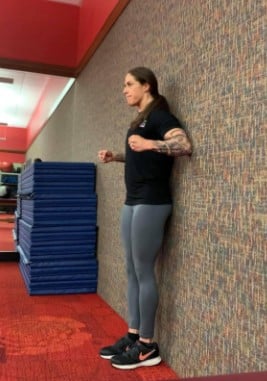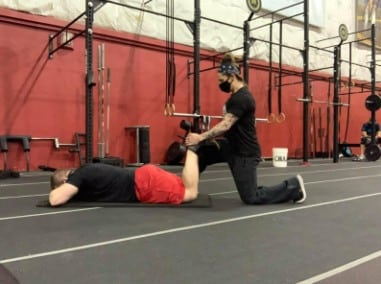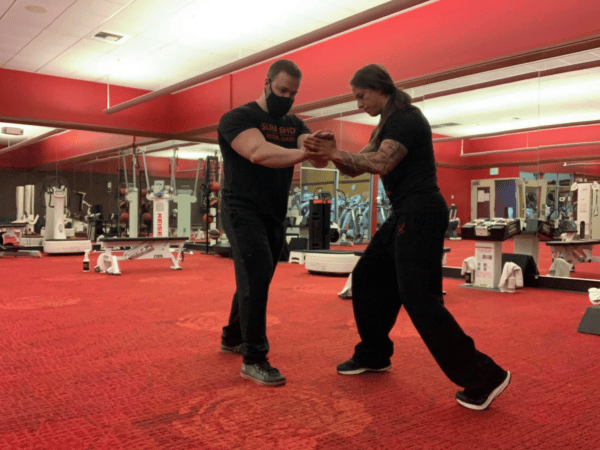As a Fitness Professional for over 15 years, I have had both the opportunity to work with people from all walks. Many times, I have found myself working with people who have unique health and fitness needs. Whether they be post rehabilitation, movement impaired, diabetic or have other prevalent diseases, the magnificently “wise” aka seniors as well as the true “young at heart” aka adolescents. All of whom require special consideration when designing and implementing training strategies.
With life comes many unknowns, failures and setback, times of adversity, and moments of hope, especially in 2020, the year of the pandemic. Conversely a healthy lifestyle with consistent fitness regimens and intelligent programming comes possibilities, change, success, and even better, longevity. As coaches our goal is to get people results. We are the professionals that provide a service to help our clients reach their highest potential, shoot for the stars, get them strong and keep them injury-free. It’s important to know that as a trainer, you will eventually, if you haven’t yet, run into some unfamiliar territory of training ‘special populations’.
WHAT DOES “SPECIAL POPULATIONS” MEAN?
The term special population refers to a group or groups of people that have special fitness needs owing to the compromised bodily conditions. This group includes patients with diabetes, heart and neurological accidents, injured patients, pregnant women, those in chronic pain, and those that have various comorbidities or are among the older population. The term “special” in Special Populations usually gets misinterpreted for someone who is damaged or can’t do as much – which simply isn’t the case. All the “special” indicates is we are going to as coaches take the extra step to custom fit our techniques.
Just the other day I was at the gym when a gentleman approaches me and says, “I use to be as big as that guy over there, but then I got old and can’t move the same”. While aging no doubt may slow our roll a bit, some more than others, we still should not AVOID a part of a proper training sequence that will in fact be far more rewarding than if never done. Why be held back because you move at a different pace and moving to the beat of your own drum? Aging, injuries, illness, and movement discrepancies should NOT prevent you from reaching your fitness goals or being a healthier YOU!
As mobile creatures, we need to MOVE! Movement makes movement better. A proper training sequence, regardless of skill acquisition, health bill, or demographic, starts with a sufficient warm-up. An appropriate warm-up sequence begins with addressing movements with a parasympathetic emphasis and progresses to movements with a sympathetic emphasis.
CNS PREPARATION FOR SPECIAL POPULATIONS
The Central Nervous System (CNS) is the controller of the body and consists of immensely important structures that help you be you. While the entire body is impacted by the Nervous System, the Central Nervous System consists of the brain, spinal cord, and retinas. The spinal cord is the dense network of wires that run up and down and stretch across the body to let you move and protect yourself and effectively controls all your muscles. Moreover, you can achieve a higher performance of the musculature by boosting up your CNS. This boosting or excitement is carried out by a phenomenon called post activation potentiation (PAP) which plays a vital role in fitness or sport training preparation. Post-Activation Potentiation is the combination of high mechanical tension into high mechanical velocity. This combination opens up a window in the body for supernatural potential! This preparation is done immediately before the main course of activity. In simple words, this phase (phase 6 of PPSC’s dynamic warm-up) is the last sequence to a complete well-rounded warm-up.
It is important to note that CNS stimulation and full preparation prior to training stimulus is crucial for a FULL and PROPER warm-up of the human movement system. Commonly expressions of explosive, twitchy movements are utilized in the final phase of the dynamic warm-up to excite the CNS in preparation of training performance. Although explosive movements are suitable for the general population (ie those who have no contraindication or limitations), we need to consider an alternative option of similar preparation for those who fall into the ‘special population’ category.
PRIMINING CNS FOR SPECIAL POPULATIONS
Those undergoing rehabilitation after injury, recovering from illness, or for those who may have limited or impaired movement abilities, or chronic pain, like the general population, need to prepare their CNS for (strength) training. More often, the explosive and twitchier approach that is common for general populations’ training is contraindicated, for this specific population’s purpose and instead should adopt ISOMETRIC exercises choices.
This exercise type (isometric) comprises maximal force production and maximal muscular recruitment by use of an unmovable object allowing for a powerful method to conclude the dynamic warm-up prior to strength training.
A study suggests that incorporating isometrics proves to be just as effective and an exceptional alternative in producing the PAP effect as seen with explosive twitchy based movements. Rather than using the explosive nature of plyometrics, by utilizing isometrics we can acquire a similar PAP effect to get your body in state of readiness.
ISOMETRIC EXERCISE SELECTION FOR SPECIAL POPULATION CNS PREP
Isometrics are not created equal. The following ‘go to’ isometrics can be adopted for optimal results when used as an alternative to explosive movements for the special population clientele to minimize or eliminate pain free movement. Perform 2-4 sets with 3-7 seconds of MAXIMAL quality contraction where joint angle is at 90 degrees. You will see the word “pillar” in every exercise option so let me define what that means. Pillar = shoulders + the hips + the core. The shoulders are going to be “set in place” with the co-contractions of the pecs and lats, while the hips will be “set” with the co-contractions of the glutes and adductors which will help maintain a spinal neutral position.
MED-BALL CHEST SQUEEZE IN PLANK

COACHING TIPS
** Maintain pillar position by co-contracting pecs/lats, glutes/adductors.
** Set your brace with the proper breath.
** Try to squeeze hands together as well as downward.
** Added muscular contraction by flexing the quads.
Regression: Elevate to wall or stand in place with self-manual palm press/chest squeeze
90/90 SPLIT STANCE HOLD WITH OR WITHOUT BALL SQUEEZE

COACHING TIPS
** Establish a strong stable pillar position first.
** 90-degree bend in both legs while creating tension and torque through the front full foot and back toes and ball of the foot.
** Arms to side with proper co-contractions (pec/lats), while making FISTS to ensure the added irradiation and tension moving up chain.
** 90/90 split squat stance hold with med ball squeeze.
** Same as above, but now you are “hugging” and squeezing the ball inward toward the chest.
TRX ISO-ROW HOLD or ISOMETRIC UPPER BACK WALL HOLD

COACHING TIPS
** First set the pillar with your co-contractions and your brace
** Perform a TRX Row stopping at 90-degree bend in the arms.
** Maximally contraction of pecs/lats, core
** Handles set at hip height, feet position can vary depending on skill/fitness level.
UPPER BACK WALL SQUEEZE
** Standing with back to wall
** Drive elbows HARD into the wall while maintain pillar and brace.
** Added irradiation with tension and torque of the feet.
MANUAL “LEG PRESS” WITH UPPER BACK DRIVE

COACHING TIPS
** Lying supine on floor (added stability) maintaining pillar position
** Leg(s) up at a 90 degree with ankle(s) dorsi flexed.
** Arms are 90 degrees with elbows being driven down into the ground as fists are made for added tension up chain.
** Client pushes through legs while trainer uses manual resistance acting as an unmovable object.
MANUAL HAMSTRING CURL

COACHING TIPS
** Lying prone on ground or table
** Legs are brought to a 90-degree bend.
** Client will try to curl in while trainer acts as an unmovable object resisting the full range of the curl.
** Toes are dorsi flexed
MANUAL ROTATION

COACHING TIPS
** From a standing position the pillar will be set first, the brace will be set second
** Creating tension and torque from the ground up
** Place arms at a 90-degree angle
** Without losing the pillar you will “rotate” while trainer or object resists movement allowing for isometric contraction in the transverse plane
GLUTE/HAMSTRING BRIDGE HOLD

COACHING TIPS
** Lying supine with legs bench and feet remaining FLAT on the ground to create greater torque and tension.
** Toes are turned out slightly.
** Elbows drive down into the ground while fists are made creating more irradiation up chain.
Progression: Unilateral holds
ISO-SQUAT HOLD

COACHING TIPS
** Stabilize with hands on the wall or being slightly assisted raise up on to toes as if performing a standard calf raise.
** With hands on wall, allow for tension and torque to be generate for added muscular recruitment.
** Drive toes down and heels up for full contraction of the lower leg.
PROGRESSION: Unilateral holds
CONCLUSION
The longer you stay in the game as a coach, it is likely you will get the opportunity to work within the parameters of people who fall in to the ‘special pops’ category and will certainly benefit from the usage of isometrics when strategically designing your 6-phase dynamic warm-up and training plan for ‘said’ client.
Additionally, the incorporation of isometrics exercises among the special populations group(s) provides the opportunity for empowerment by showing them what they CAN do. By intelligently placing this method into your training protocol to sufficiently address preparation of the Central Nervous System, those with special considerations will see improvements in strength and recovery, better adaptations to stimuli, decreased inflammation and achy painful joints while increasing range of motion and keeping the body PAIN-FREE.





Logan
February 15, 2021 at 1:06 pmYes! What a great article!!! And sorely needed as MANY clients need appropriate care and modifications to their programs in order to train safely & get results. Wolf, you’re a rockstar!
Add a comment